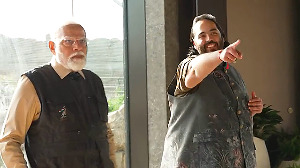The Musharraf regime has given tacit approval to attacks by pilot-less United States planes on Al Qaeda targets along Pakistan's restive border area. The strikes have been stepped up as officials fear that the new civilian government will be hostile to such an offensive.
Since January, missiles reportedly fired from Central Investigative Agency operated Predator drones have hit at least three suspected hideouts of Islamic militants, including a strike on March 16 in Toog village in South Waziristan that left 20 dead.
The Newsweek, quoting US officials and Pakistani sources, said the recent wave of Predator attacks are at least partly the result of understandings the US officials reached with Musharraf and other top Pakistanis, giving Washington virtually unrestricted authority to hit targets in the border areas.
The surge, says the magazine in its upcoming issue, began after visits to Pakistan at the beginning of the year by senior US officials, including intelligence czar Mike McConnell, CIA director General Michael Hayden and Admieal William Fallon, who recently resigned as commander of the US forces in the region.
Some news reports had said at the time that President Pervez Musharraf had rebuffed US proposals to step up combat operations inside Pakistan.
Bruce Riedel, a retired CIA expert on the region, said that a new wave of terrorism inside Pakistan has forced Musharraf and new military chief Ashfaq Kayani to acknowledge that the extremists threatening Americans now also pose a growing threat to Pakistan's internal security.
Another reason for the rise in Predator strikes is that Washington fears that any newly formed civilian government in Pakistan will be more hostile to US operations there than Musharraf's current regime.
Time to act, in other words, may be running out.
A former official told the magazine that the United States has been relying on its own intelligence to uncover terror targets because Pakistani intelligence agencies are weak on espionage in the tribal areas.
By contrast, the news magazine said, US forces have a heavy presence on the Afghan side of the border.






 © 2025
© 2025